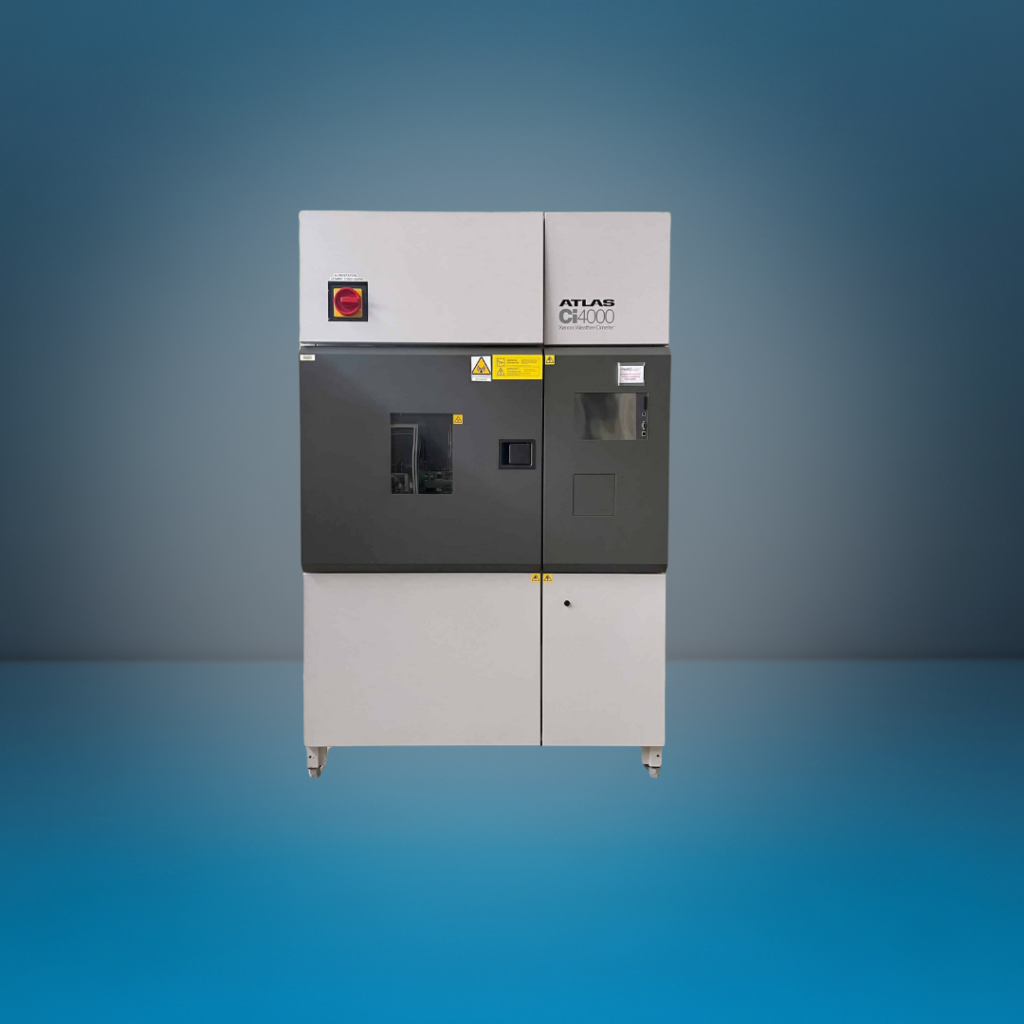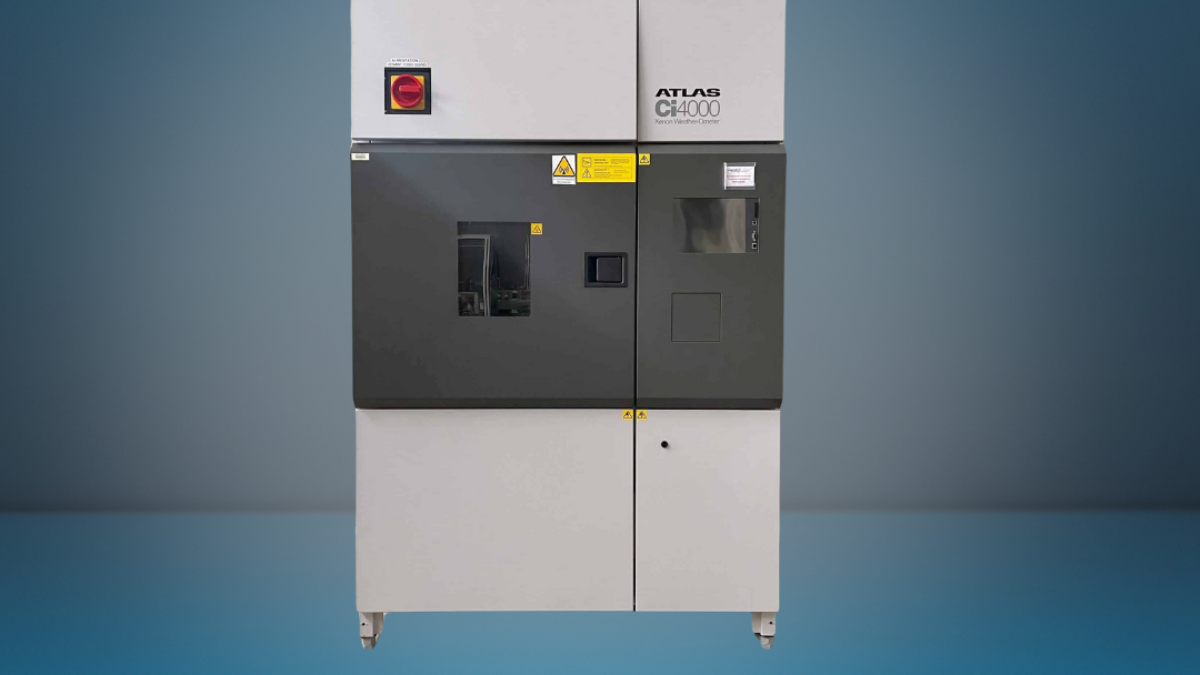Xenon / UV Testing As Per ASTM G155
Unveiling the Power of Xenon / UV Testing as per ASTM G155
Introduction
- In industries where products are exposed to outdoor environments, the ability to withstand harsh weather conditions is critical. This is where Xenon/UV testing, guided by ASTM G155, becomes a vital tool in predicting material performance and ensuring product longevity. From plastics to coatings, this standard simulates the impact of sunlight, moisture, and temperature, offering manufacturers a window into their product’s future durability.

Understanding ASTM G155
ASTM G155 is a globally recognized testing standard designed to simulate natural sunlight and environmental conditions using a xenon arc light source. It replicates the full spectrum of sunlight, including ultraviolet (UV), visible light, and infrared, which are responsible for most material degradation in outdoor environments. This accelerated aging process allows manufacturers to test how materials react to prolonged exposure to sunlight, moisture, and temperature variations, helping to predict their real-world performance.
How Does Xenon/UV Testing Work?
At the core of this testing is the xenon arc light. Unlike UV-only tests, which focus solely on UV exposure, xenon arc testing simulates the entire spectrum of sunlight, making it ideal for evaluating materials that degrade due to a combination of UV radiation and visible light.
The test chamber alternates between:
- Light exposure: Mimics the intensity and wavelengths of natural sunlight.
- Humidity and water spray cycles: Simulates dew, rain, or humidity, crucial for assessing how materials handle moisture-related stress.
- Temperature control: Adjusts heat levels to replicate thermal conditions, offering insights into how a material performs under fluctuating temperatures.
Key Benefits of Xenon/UV Testing
- Accurate Weather Simulation: ASTM G155 ensures that test conditions closely mirror those encountered in the real world, providing reliable data on how a material will weather over time.
- Material Durability: By exposing materials to intense sunlight and moisture, the test helps determine how they will hold up against fading, cracking, or loss of mechanical integrity. This is critical for outdoor products like coatings, plastics, and automotive parts.
- Reduced Testing Time: Xenon arc testing allows manufacturers to accelerate the natural aging process, compressing years of weather exposure into weeks or months. This means faster results and quicker time-to-market for improved products.
- Versatility Across Industries: ASTM G155 is used across industries to test materials like plastics, textiles, rubbers, paints, and coatings, making it a versatile tool for ensuring the longevity of products used in construction, automotive, aerospace, and consumer goods.
Testing Procedure for ASTM G155
The xenon arc test follows a structured procedure to ensure consistent and accurate results:
- Sample Preparation: The material samples are placed in the test chamber, where they are exposed to controlled cycles of sunlight, moisture, and temperature.
- Testing Cycles: The samples undergo a series of alternating light and moisture cycles, simulating day-and-night or varying weather conditions, including rain, dew, and heat.
- Performance Evaluation: After exposure, the materials are inspected for signs of degradation, such as color fading, surface cracking, embrittlement, or loss of strength.
- Data Analysis: The data collected during and after the test helps manufacturers understand how the material will perform in real-world outdoor environments. This data is critical for product design improvements and material selection.
Applications of Xenon/UV Testing
Xenon/UV testing as per ASTM G155 is essential for industries that rely on weather-resistant materials. Common applications include:
- Coatings and Paints: To ensure that outdoor surfaces retain their color and protective qualities.
- Plastics and Polymers: For products like outdoor furniture, automotive components, and construction materials that must withstand prolonged sun exposure.
- Textiles and Fabrics: To assess how UV rays and moisture affect the durability and appearance of outdoor fabrics.
- Rubber: Evaluating how UV radiation impacts rubber’s flexibility and resilience over time.
Why Choose Xenon Arc Testing?
For any industry where materials are exposed to the elements, Xenon Arc testing is essential. It provides invaluable insights into how products will perform in real-world conditions, helping companies:
- Enhance product quality and extend material lifespans.
- Reduce costly failures by identifying potential issues before they occur in the field.
- Optimize material selection for outdoor applications by understanding the environmental stress factors that impact different materials.

Conclusion
- Xenon/UV testing according to ASTM G155 offers a robust method for assessing the durability of materials under simulated sunlight, moisture, and temperature conditions. By replicating the effects of long-term exposure to the elements in a controlled setting, it helps manufacturers design products that will stand the test of time. For those seeking to ensure their products meet the highest standards of weatherability and durability, this testing method is invaluable.

